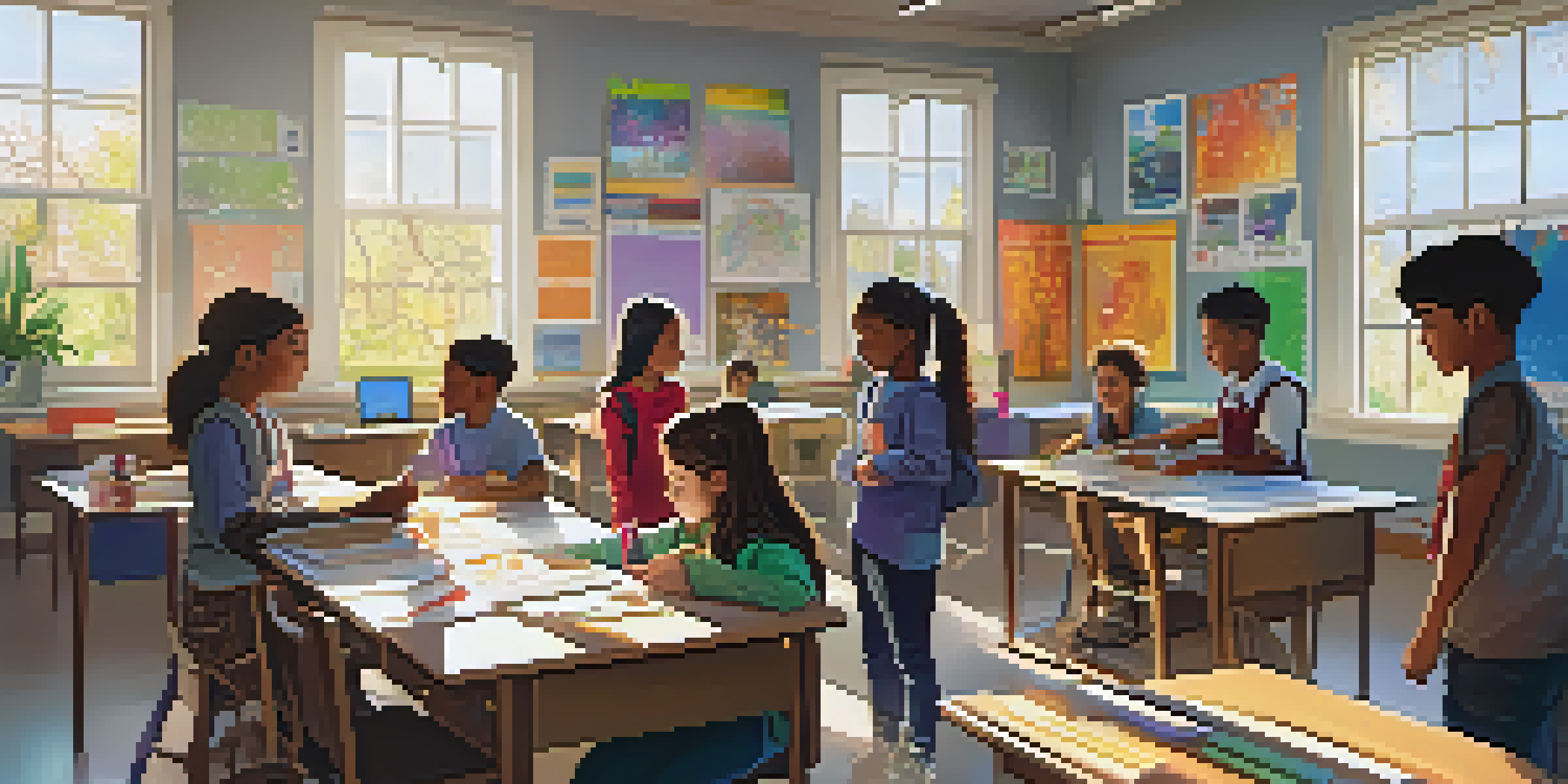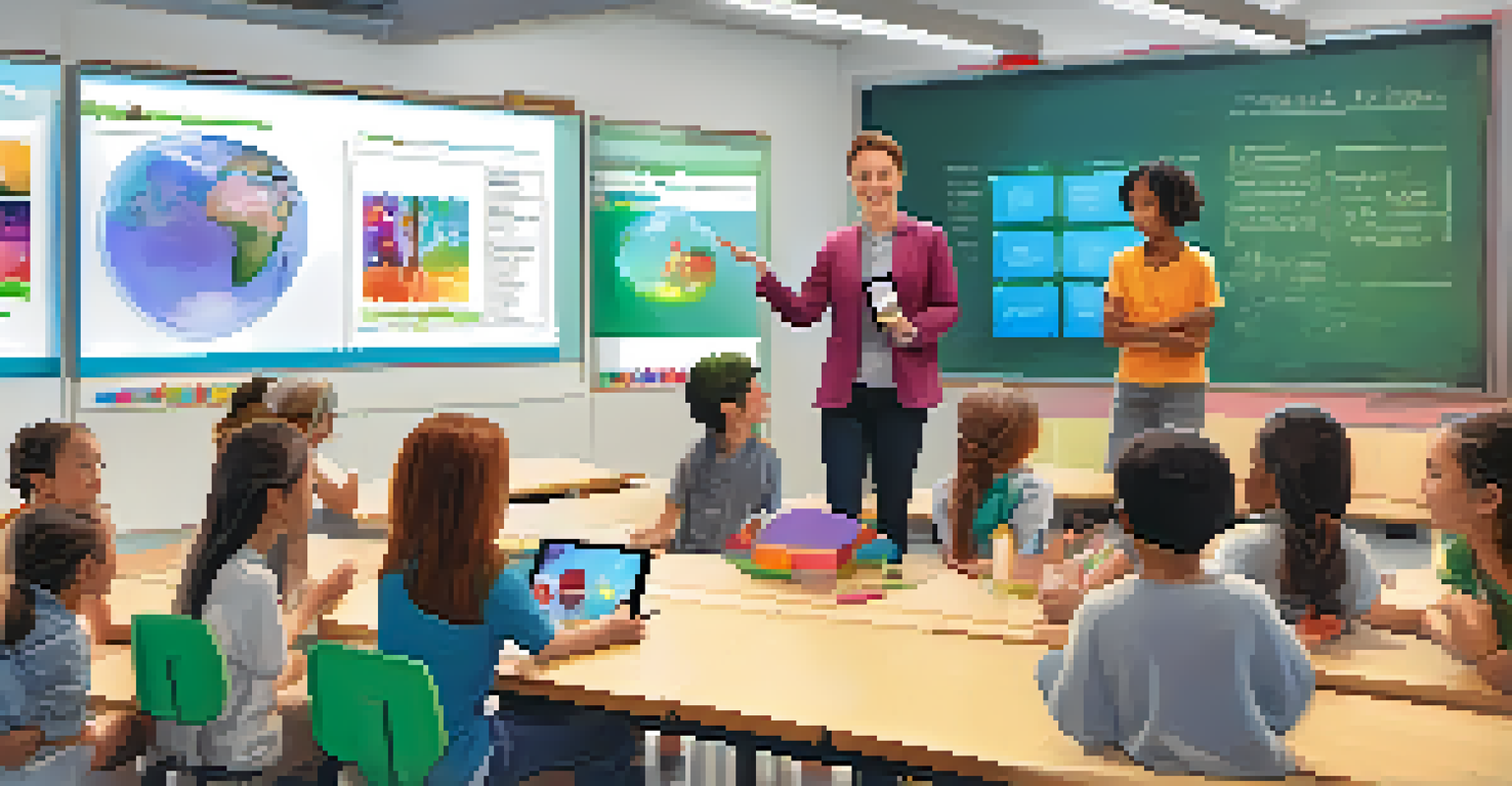Creative Thinking and Cognitive Development in the Classroom

Understanding Creative Thinking in Education
Creative thinking is the ability to think outside the box, generating unique ideas and solutions. In the classroom, it encourages students to engage with material in innovative ways, fostering a love for learning. This approach not only enhances academic performance but also prepares students for real-world challenges, where creativity is key.
Creativity is intelligence having fun.
By incorporating creative thinking into lessons, educators can help students develop critical skills like problem-solving and adaptability. For example, a science project that allows students to design their own experiments can spark their imagination and encourage them to explore concepts deeply. This hands-on approach transforms traditional learning into an exciting adventure.
Ultimately, understanding creative thinking is about recognizing its vital role in education. It isn't just about art or music; it's about cultivating a mindset that values curiosity and exploration. When students feel empowered to express their ideas, the entire classroom environment becomes more dynamic and engaging.
The Link Between Creativity and Cognitive Development
Cognitive development refers to the growth of a child's ability to think and reason. Research shows a strong connection between creative thinking and cognitive skills, as engaging in creative activities stimulates brain development. Activities like brainstorming sessions or creative writing exercises challenge students to think critically and expand their intellectual horizons.

When students engage in creative tasks, they learn to approach problems from multiple angles. This not only enhances their problem-solving abilities but also cultivates resilience, as they learn that failure can lead to new discoveries. For example, a student who struggles with a math problem might find a creative solution by visualizing the problem in a new way.
Creativity Enhances Learning Outcomes
Integrating creative thinking in education fosters student engagement and prepares them for real-world challenges.
Thus, fostering creativity in the classroom is essential for supporting cognitive development. Educators can help by integrating creative practices into everyday lessons, making learning a more holistic experience. When creativity and cognition work hand in hand, students are better equipped for future challenges.
Strategies to Encourage Creative Thinking
Encouraging creative thinking in the classroom starts with providing a supportive environment. Teachers can create a space where ideas are welcomed, and students feel safe to express themselves without fear of judgment. Simple actions, like praising effort over correctness, can significantly boost students' confidence in their creative abilities.
The greatest danger in times of turbulence is not the turbulence; it is to act with yesterday's logic.
Incorporating diverse teaching methods also plays a vital role. For example, using storytelling or role-playing can engage students in imaginative ways, making lessons more memorable. Projects that encourage collaboration, such as group presentations or art installations, can further enhance creativity by allowing students to share and build on each other's ideas.
Ultimately, creativity flourishes when students are given the freedom to explore and experiment. By implementing strategies that promote creative expression, educators can inspire students to think critically and innovatively. This not only enriches their learning experience but also prepares them for a rapidly changing world.
The Role of Play in Cognitive and Creative Development
Play is often seen as a vital component of childhood, but its importance extends into the classroom, particularly for developing creativity and cognitive skills. Through play, children learn to experiment, take risks, and explore their imagination. Activities like building blocks or role-playing can foster problem-solving skills and enhance cognitive abilities.
Incorporating playful elements into lessons can make learning more enjoyable and effective. For instance, using games to teach math concepts or science principles can lead to a deeper understanding. When students are engaged in playful learning, they are more likely to retain information and apply it creatively in other contexts.
Play Fuels Cognitive Growth
Incorporating play into learning helps develop problem-solving skills and enhances cognitive abilities.
Therefore, educators should not underestimate the power of play in the classroom. By blending structured learning with playful activities, teachers can create a balanced approach that nurtures both creativity and cognitive development. This combination not only makes learning fun but also empowers students to explore their potential.
The Impact of Technology on Creative Learning
In today's digital age, technology has transformed the landscape of education, offering new avenues for creative learning. Tools like interactive apps, digital storytelling, and virtual reality can enhance students' creative experiences. These technologies allow students to explore complex concepts in engaging and innovative ways.
For example, using a digital platform for collaborative projects enables students to combine their ideas seamlessly, regardless of location. This not only enhances their creativity but also develops essential skills for the future workforce, such as collaboration and digital literacy. In this way, technology becomes a powerful ally in fostering creative thinking.
However, it's essential to balance screen time with hands-on activities to ensure a well-rounded approach. Educators should strive to use technology as a tool that complements traditional learning methods, creating a blended environment that supports creativity. By doing so, they can prepare students for both the challenges and opportunities of the modern world.
Measuring Creativity in the Classroom
Measuring creativity can be challenging, as it often manifests in varied and subjective ways. Traditional assessments may not capture a student's creative potential, so educators need to adopt more holistic evaluation methods. Observations of student participation in creative activities or portfolios showcasing their work can provide deeper insights into their abilities.
Incorporating self-assessments where students reflect on their creative processes can also be valuable. This encourages them to think critically about their work and recognize their growth over time. By fostering a culture of self-reflection, educators can help students take ownership of their creative development.
Technology Boosts Creative Learning
Utilizing technology in education provides innovative avenues for students to express creativity and collaborate effectively.
Ultimately, measuring creativity requires a shift in perspective. Educators should focus on individual growth rather than comparison to peers. This approach not only nurtures creativity but also builds a more inclusive and supportive classroom environment.
Creating a Culture of Creativity in Schools
Building a culture of creativity within schools involves collaboration among educators, administrators, and students. It starts with leadership that values and prioritizes creative practices, setting the tone for the entire institution. When creativity is embraced at all levels, it can permeate through every subject and activity.
Professional development for teachers is crucial in this process. Providing educators with training on creative teaching strategies and innovative assessment methods equips them to nurture creativity effectively. Schools can also encourage cross-disciplinary projects, allowing students to apply their creativity across different subjects.

Ultimately, a culture of creativity fosters an environment where students feel inspired to explore and innovate. By prioritizing creativity in education, schools can prepare students not only for academic success but also for a future where creative thinking is essential. This commitment to creativity can lead to a generation of thinkers, doers, and innovators.